Introduction
In the competitive landscape of mobile app development, the difference between a successful application and one that falls flat often lies in the design principles that guide its creation. Prioritizing user experience (UX) and user interface (UI) is not merely a best practice; it is a necessity for fostering user engagement and satisfaction.
By focusing on: - Simplicity - Intuitiveness - Responsiveness
developers can create cohesive app experiences that captivate users from the moment they download. Moreover, as the demand for offline capabilities and enhanced security rises, integrating these features becomes crucial for accessibility and user trust.
This article delves into: 1. The core principles of effective mobile app design 2. Engagement strategies to keep users active 3. The importance of testing and feedback in refining the app experience
All essential components for building a loyal user base in today’s digital age.
Core Principles of Effective Mobile App Design
In the realm of mobile app development, following mobile apps best practices by prioritizing experience (UX) and interface (UI) design principles is essential for success. A cohesive app experience is achieved by integrating UX with UI design, which enhances engagement and satisfaction. The foundation of effective design rests on key principles such as simplicity, intuitiveness, and responsiveness.
- Simplicity is essential; a clean layout with minimal distractions enables individuals to navigate the app effortlessly, reducing bounce rates. Data indicates that even a one-second delay in page load time can lead to increased dissatisfaction, underscoring the necessity for streamlined design.
- Intuitive design further enhances usability, allowing individuals to grasp app functionalities without extensive instructions.
Furthermore, responsiveness is vital; apps must perform seamlessly across various devices and screen sizes to sustain engagement. Significantly, with 49% of individuals favoring one-handed use of their smartphones, optimizing layouts for accessibility can greatly enhance engagement. For instance, by ensuring that important elements are within easy reach for one-handed use, developers can create more accessible and user-friendly mobile interfaces, resulting in higher retention.
As emphasized by industry insights, software development firms allocate roughly 20% of their overall budget to UX design, demonstrating its essential role in promoting retention and satisfaction. Neglecting UX can result in low retention rates, negative reviews, and decreased downloads, even if the app has great features. By applying mobile apps best practices, developers can create applications that not only engage individuals but also foster long-term loyalty.
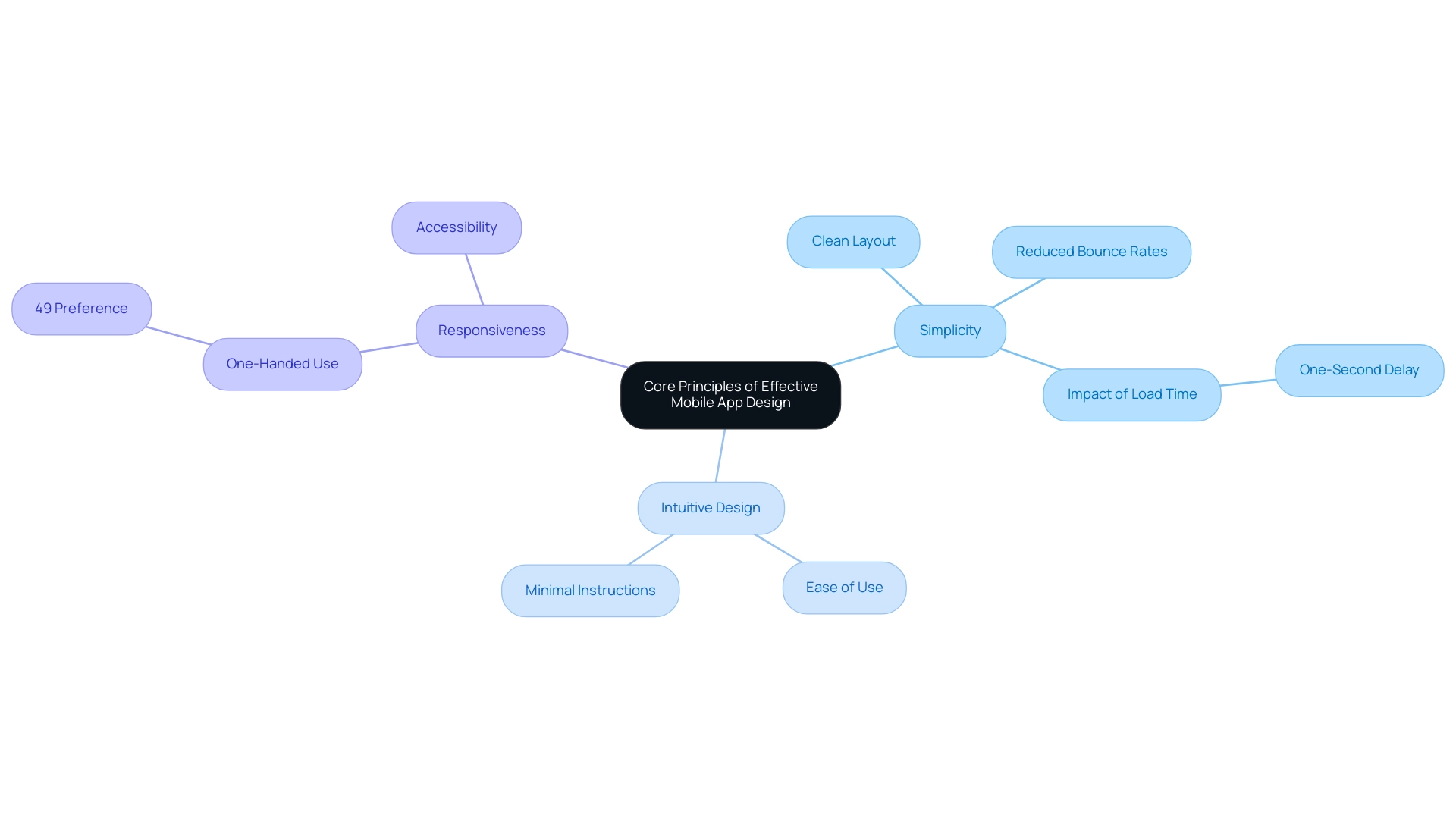
Designing for Offline Use: Enhancing Accessibility and Usability
To significantly enhance accessibility and overall experience, it is essential to adhere to mobile apps best practices by integrating offline capabilities within your mobile app. This can be effectively accomplished by:
- Allowing individuals to download content for offline access
- Utilizing local data storage solutions
For instance, applications like Google Maps exemplify this strategy by allowing individuals to download maps for offline navigation, ensuring uninterrupted service even in areas with poor connectivity.
Furthermore, it is crucial that essential functionalities remain available without an internet connection. Implementing these features is one of the mobile apps best practices, as it not only broadens the app's usability but also addresses the needs of users in regions with limited access. Notably, Lancôme experienced a remarkable 51% rise in sessions after implementing Progressive Web Apps (PWAs), highlighting the potential impact of enhancing app usability.
Additionally, the telecommunications sector's advancements are shaping internet access on the go, making offline functionality increasingly relevant. By addressing these needs, businesses can enhance customer satisfaction levels, which is especially crucial considering that, as pointed out by Tom Karwatka, CEO of DivanteLTD, conversion figures on mobile can be 2-3 times lower than on desktop in certain situations. Therefore, enhancing app usability through offline capabilities can be a strategic move to drive engagement and retain customers, which reflects mobile apps best practices, especially as digital marketing evolves with connected devices like smartwatches and connected televisions.
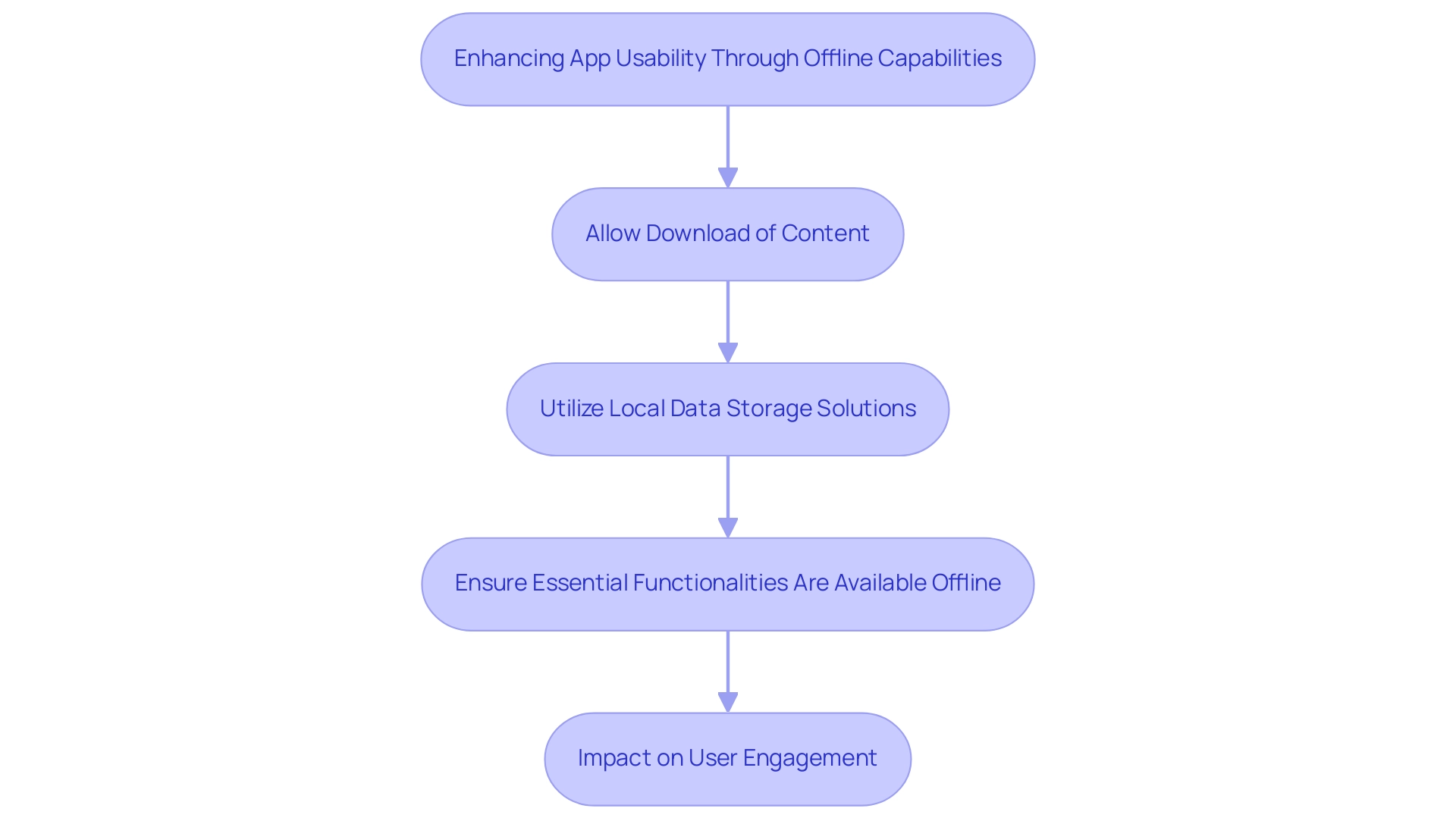
Engagement Strategies: Keeping Users Active and Informed
To enhance engagement and maintain an active base, it is essential to implement:
- Personalized notifications
- Gamification elements
- Social sharing features
within your loyalty program. Our tailored e-commerce solutions have a proven track record of significantly improving critical KPIs such as retention rates, Average Order Value (AOV), and Lifetime Value (LTV) for our clients. Strategies such as personalized notifications act as effective reminders of new content or features that align with individuals' interests, encouraging them to return to the app.
Notably, Google Chrome maintained a remarkable 93% share of push notification subscribers in 2020, highlighting its effectiveness. According to Artem Dogtiev, the higher medium on the Android side is attributed to the automatic enabling of push notifications, contrasting with iOS individuals who must actively consent. By integrating gamification techniques, such as rewarding participants for completing tasks or achieving milestones, you not only drive engagement but also create a more enjoyable app experience.
Furthermore, empowering users to share content on social media significantly enhances visibility and attracts new users to the platform. Research suggests that incorporating a call-to-action (CTA) in push notifications can enhance click-through metrics (CTR), and an engaging graphic can elevate interaction by 2-3%. The case study titled 'Call-to-Action (CTA) in Push Notifications' illustrates that incorporating CTAs and visuals in push notifications can lead to higher click-through rates, reinforcing the importance of these strategies.
By adopting mobile apps best practices, supported by our unmatched experience in creating solutions customized to community needs, you can cultivate a devoted base that consistently engages with your app, ultimately driving the success of your e-commerce loyalty program and generating incremental revenue.
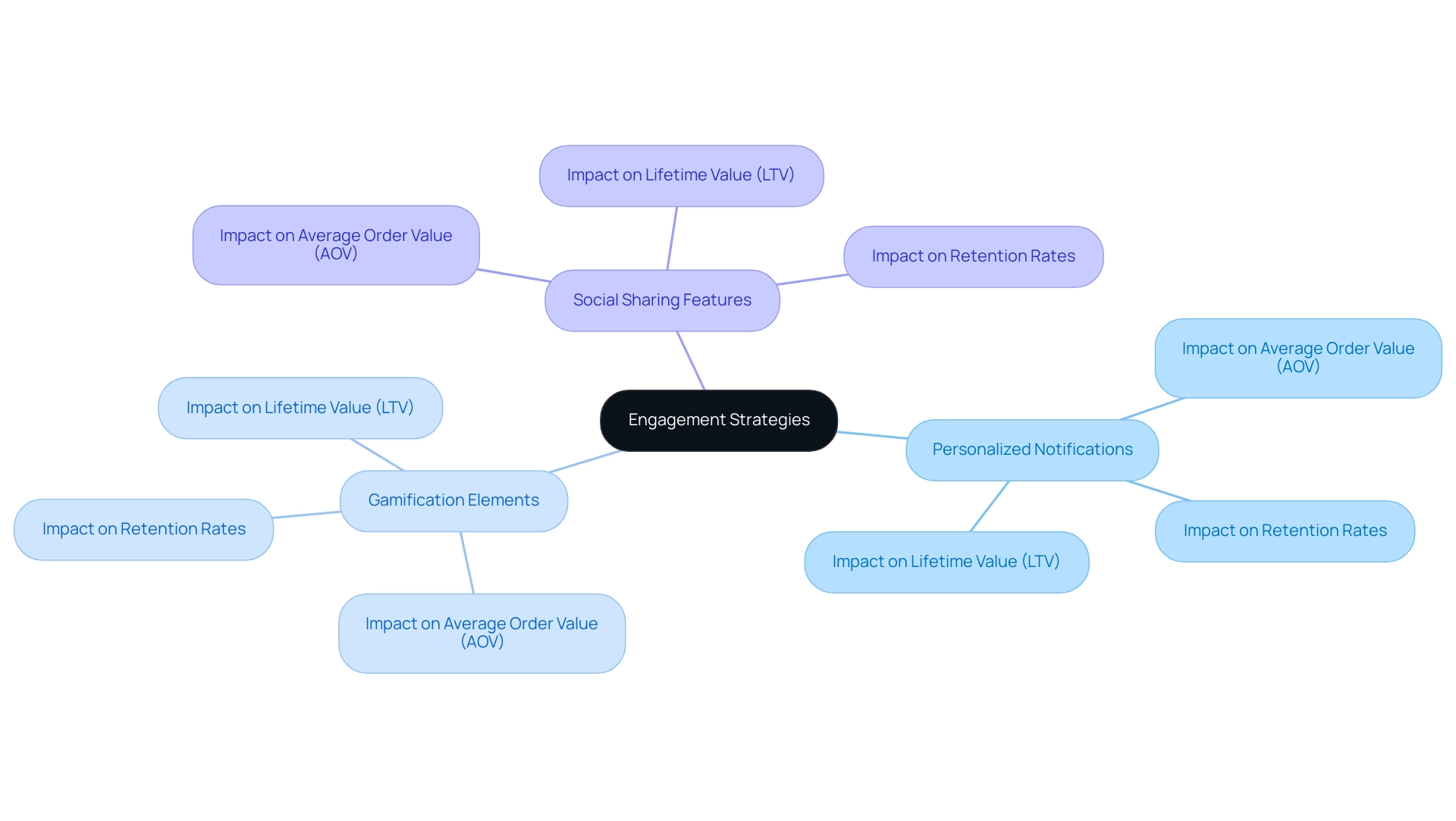
Ensuring Security: Best Practices for Protecting User Data
To effectively protect data in the digital landscape, it is essential to implement a comprehensive set of mobile apps best practices, including:
- Robust data encryption
- Secure authentication
- Regular security audits
Data encryption serves as a critical layer of defense, safeguarding sensitive information both in transit and at rest. Moreover, adopting strong authentication methods, such as multi-factor authentication (MFA), is crucial to ensure that only authorized individuals gain access to the application.
Regular security audits are also imperative; they allow organizations to identify vulnerabilities proactively and address them before they can be exploited. The stakes are high, as phishing attacks account for over 80% of reported security incidents, with losses reaching an alarming $17,700 every minute (CSO Online). Furthermore, 57 percent of organizations experience weekly or daily phishing attempts, illustrating the prevalence and impact of these attacks.
Additionally, over 5.4 million reports were received by the Consumer Sentinel Network in 2022, highlighting the growing security landscape. By prioritizing these security measures in line with mobile apps best practices, businesses not only protect data but also foster higher levels of trust, a vital component for the success and longevity of any mobile application.
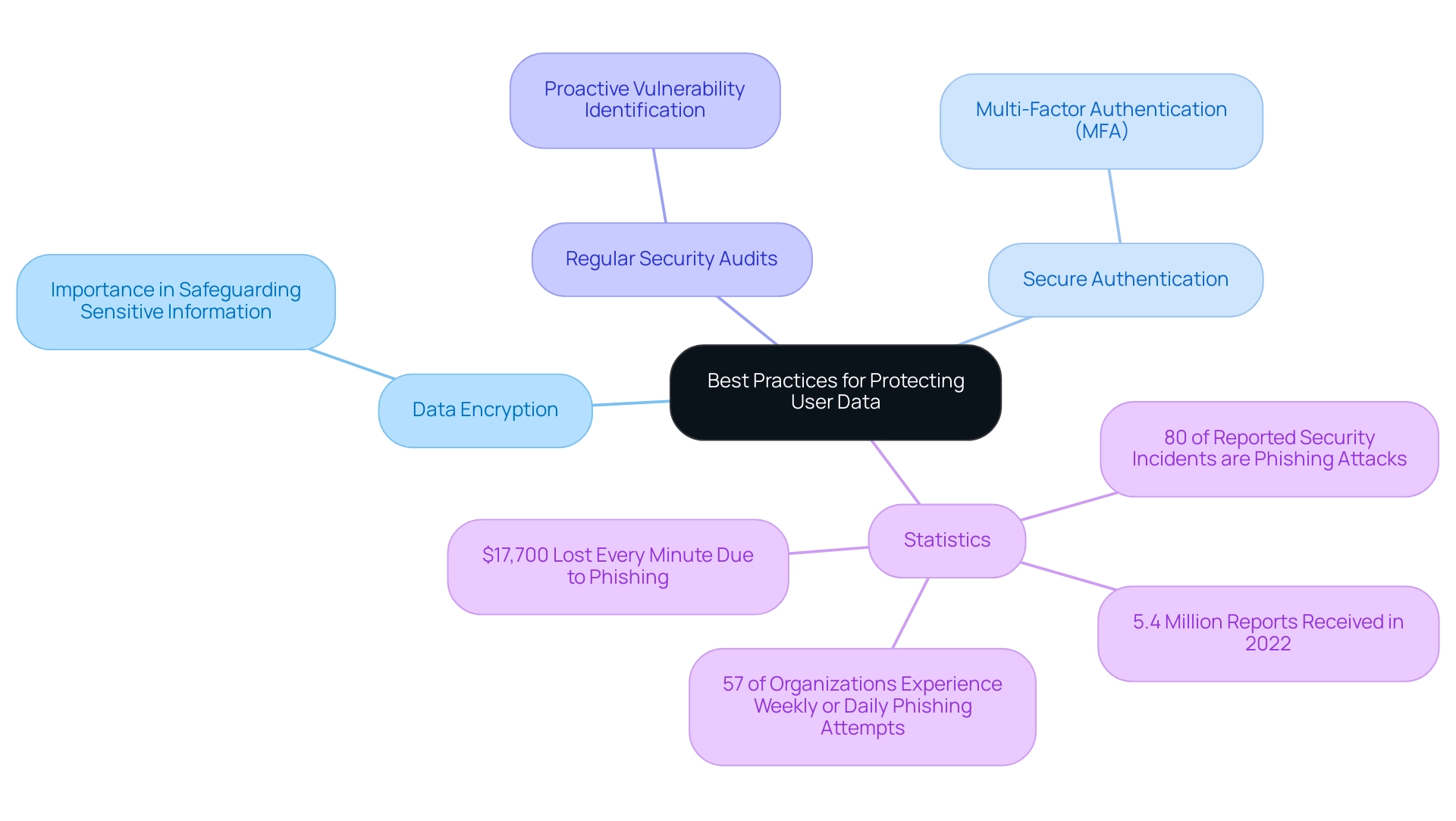
The Importance of Testing and User Feedback in App Development
In the fast-paced world of app development, adhering to mobile apps best practices for systematic testing is essential for identifying bugs and enhancing functionality. Utilizing mobile apps best practices, such as A/B testing, is essential for evaluating preferences and optimizing features effectively. For instance, a Polish e-commerce provider noted that a strategic approach to testing resulted in an increase in in-cart page visits and boosted the overall e-commerce conversion rate from 1.83% to 1.96%, alongside a doubling of the total purchased quantity.
This highlights the effectiveness of A/B testing in understanding behavior and driving conversions. However, understanding statistical significance and sample size is vital to ensure reliable A/B testing results, as outlined in mobile apps best practices highlighted in recent case studies.
Furthermore, actively soliciting feedback from participants through surveys and in-app prompts provides invaluable insights into satisfaction and areas needing improvement. By prioritizing feedback and embracing iterative testing methodologies in accordance with mobile apps best practices, developers can validate feature performance before a full launch, enhancing customer experience. Recent trends indicate that integrating mobile A/B testing not only facilitates the gradual rollout of new features but also empowers teams to quickly address issues and experiment with product offerings without disrupting the experience.
Ultimately, applying mobile apps best practices through systematic testing and user feedback is pivotal in creating a high-performing app that resonates with users and drives engagement.
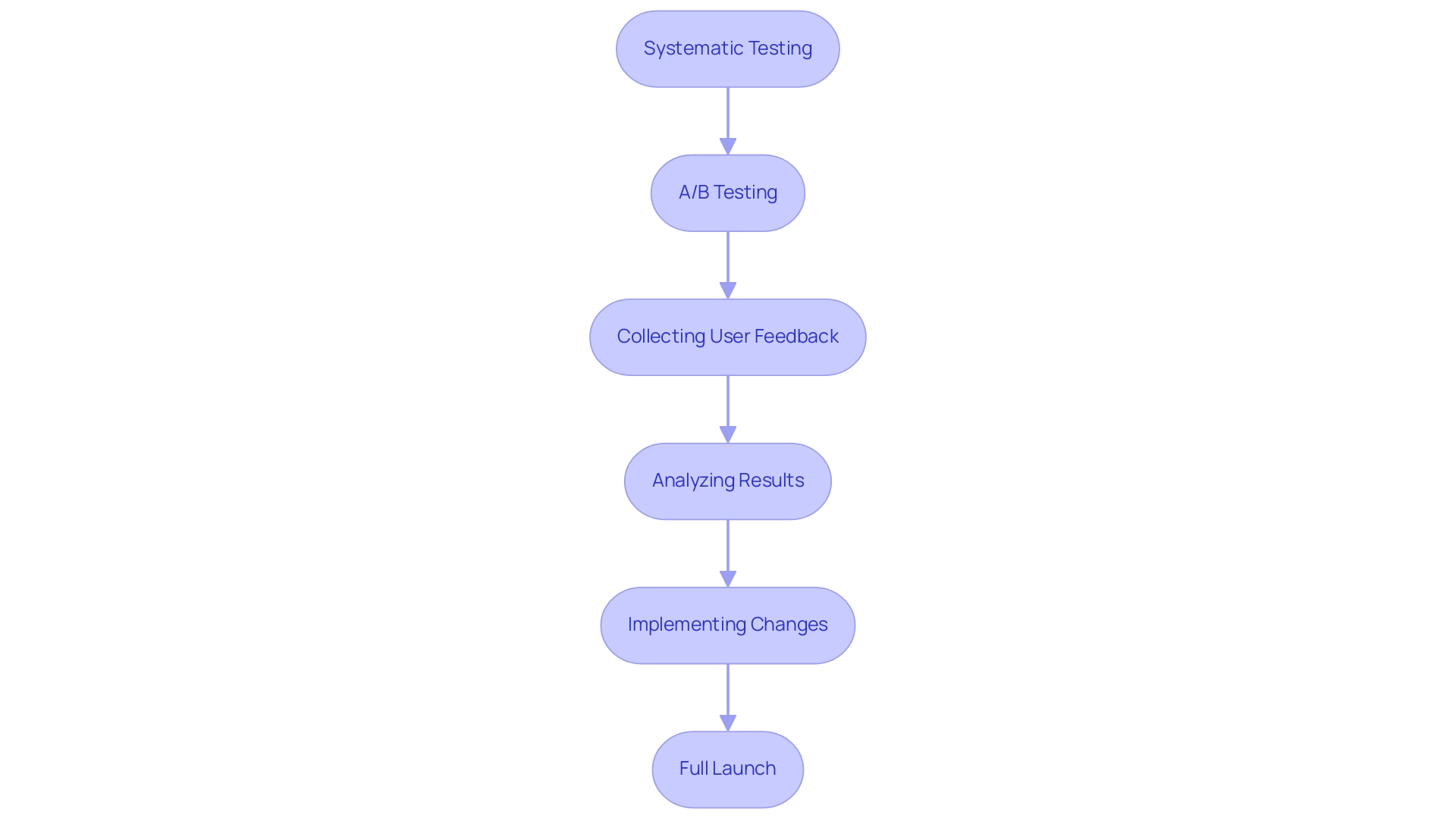
Conclusion
In mobile app development, prioritizing user experience (UX) and user interface (UI) design is critical for achieving success. By adhering to principles such as:
- Simplicity
- Intuitiveness
- Responsiveness
developers can create engaging app experiences that foster user loyalty. A clean layout reduces distractions, while optimizing for one-handed use enhances accessibility.
Incorporating offline capabilities broadens usability by ensuring essential features remain accessible without an internet connection, catering to users in areas with limited connectivity and driving engagement.
Engagement strategies like:
- Personalized notifications
- Gamification
- Social sharing
are vital for retaining an active user base. These tactics not only enrich the user experience but also attract new users to the app.
Robust security measures, including:
- Data encryption
- Regular audits
are essential for safeguarding user data and building trust, especially as cybersecurity threats continue to rise.
Finally, systematic testing and user feedback play a crucial role in refining app functionalities. Employing methods like A/B testing and actively soliciting user insights allow developers to enhance the app experience and ensure it resonates with users.
In conclusion, the key to a successful mobile application lies in a strong commitment to user-centric design, security, and continuous improvement through testing and feedback. By focusing on these elements, developers can create apps that not only meet but exceed user expectations, driving engagement and cultivating a loyal user base in a competitive market.





